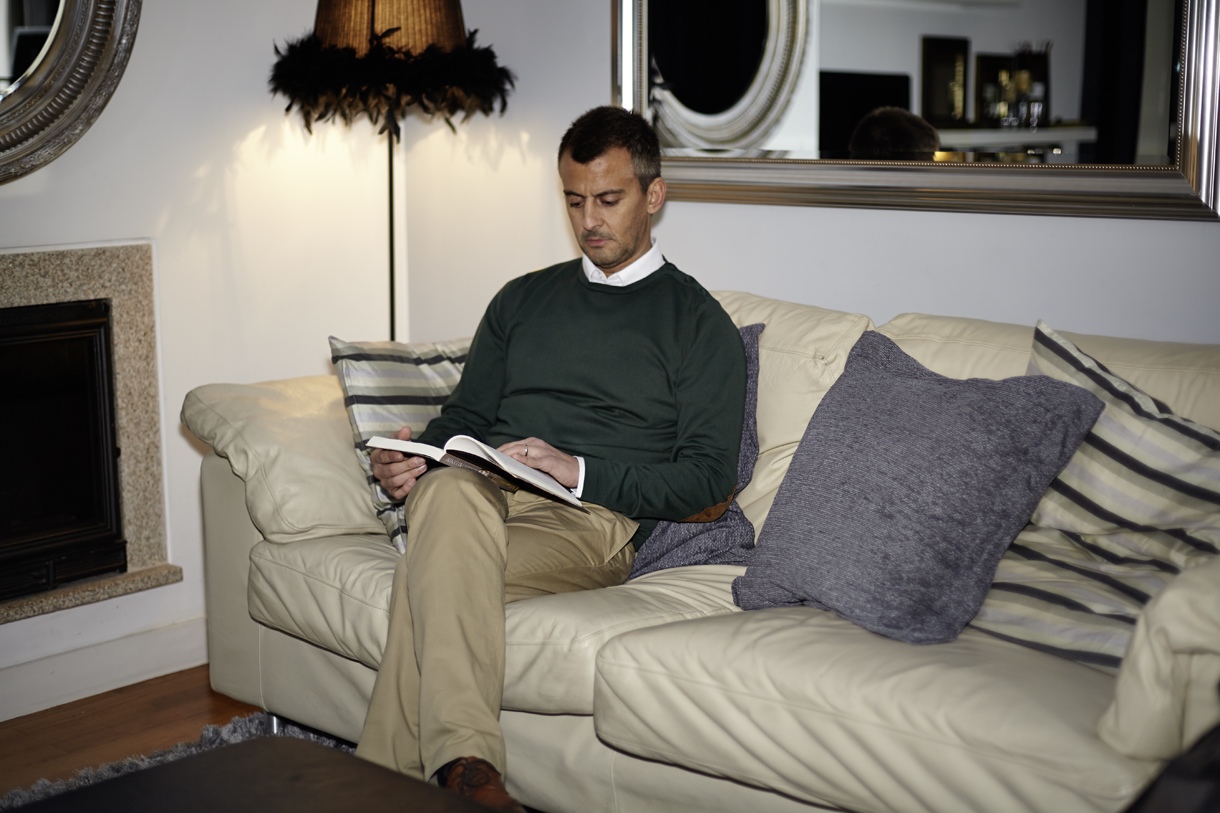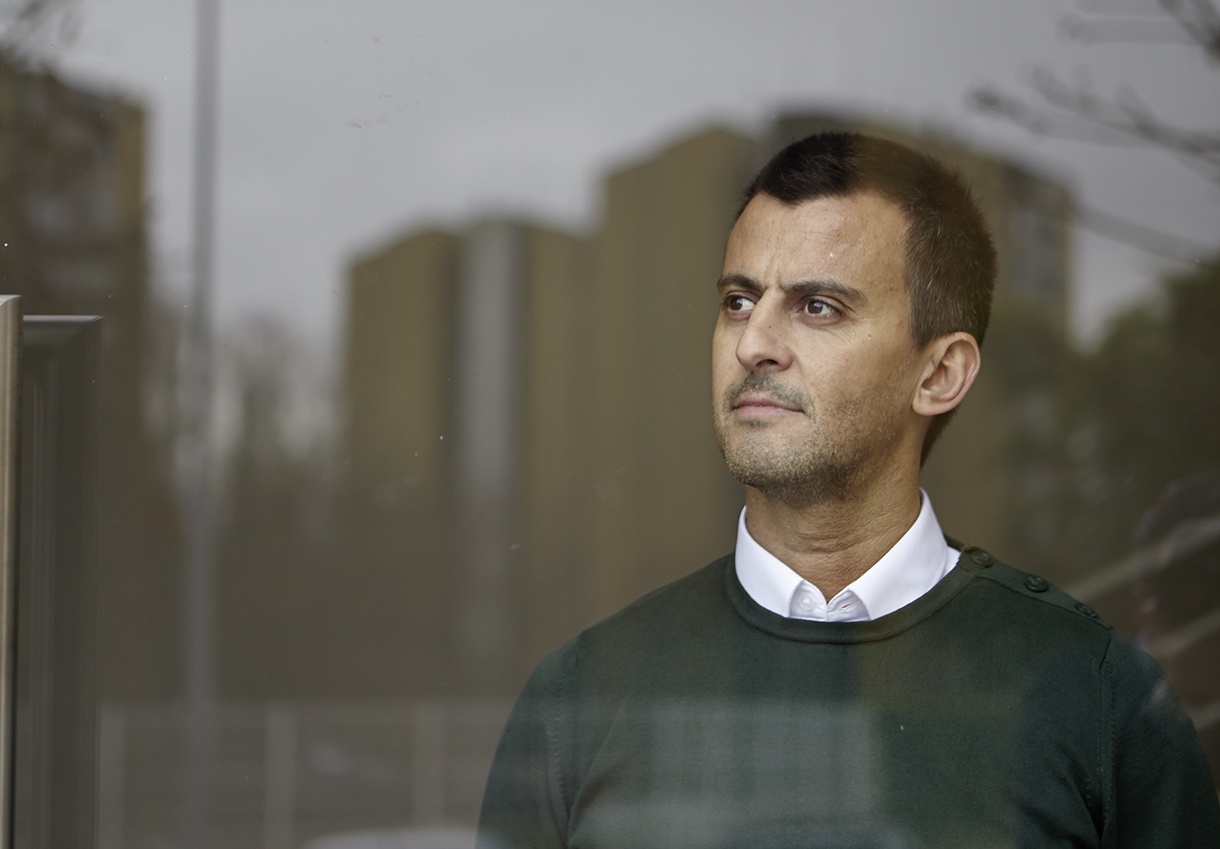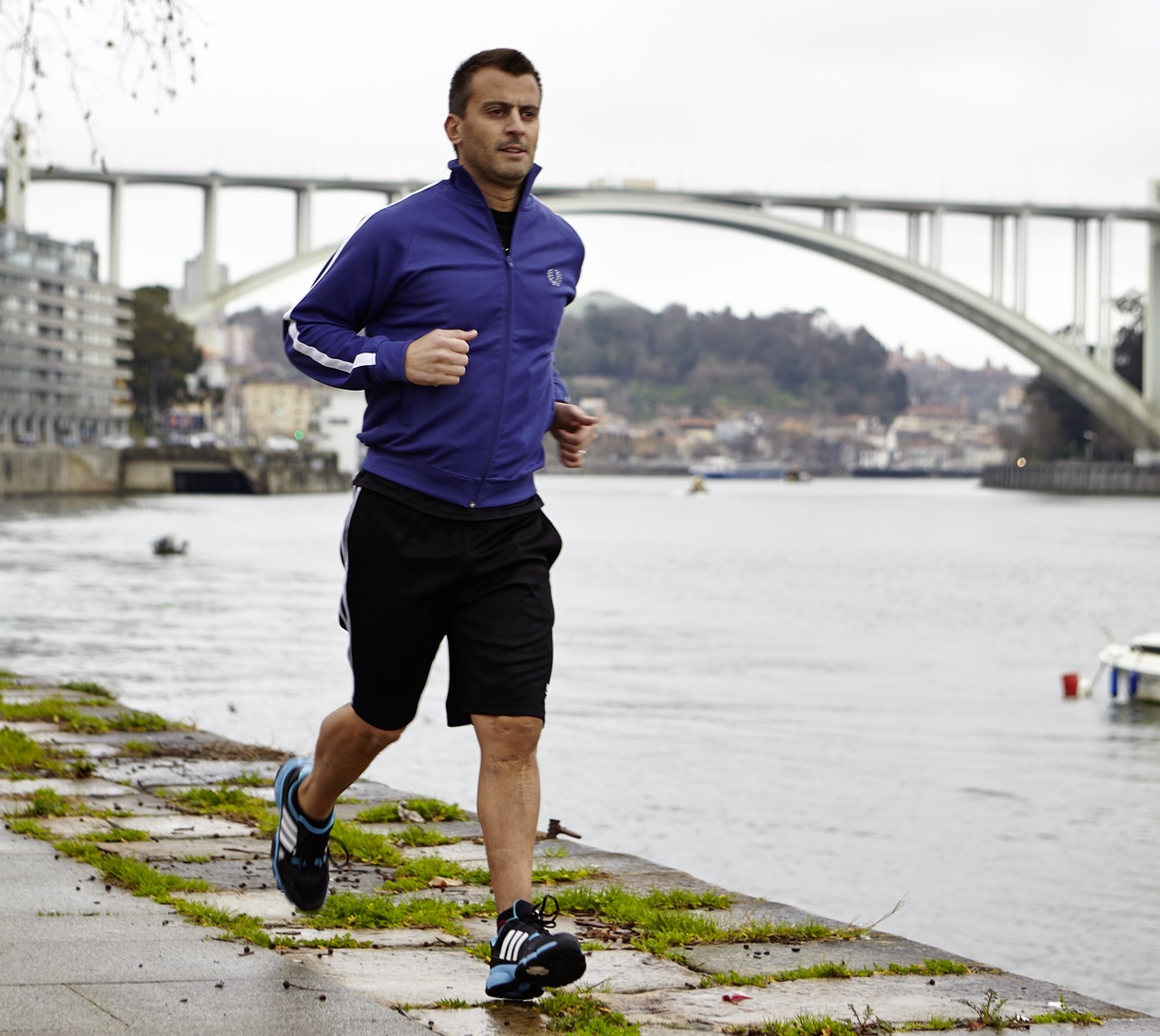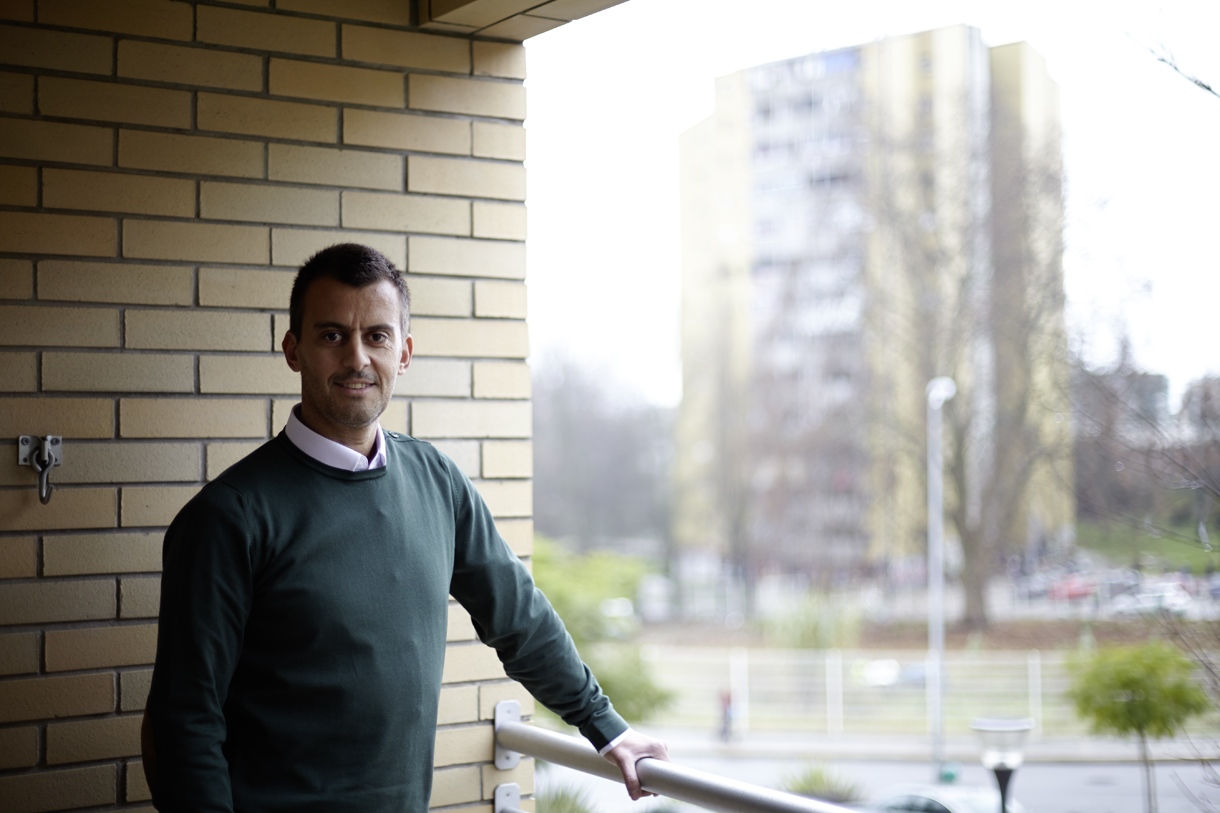
90 minutes' daily therapy easily integrated into everyday life
Porto. Pedro has already set the breakfast table before his family awakes. He is looking forward to reading his daily newspaper. Only five years ago, he barely had any time to read. But since he has become a dialysis patient, he uses the time wisely during his first 30-minute exchange, which he performs at home independently. Next, he will wake up his six-year-old son, get him ready for school and bring him there on his way to work. Three times a day, Pedro Monteiro has to do his exchange. “In total I only need 90 minutes for dialysis per day”, says the purposeful engineer and union employee. It can be integrated into daily and work-related routines. And the main thing: Pedro Monteiro can continue to be independent from others, an aspect which is near and dear to him.

The uncertainty
Pedro Monteiro still recalls the day he got his diagnosis after a blood test in February 2011: both kidneys were only efficient on a limited level. A dialysis treatment was absolutely essential, which was a shock for him. With a slightly hoarse voice, he says he already knew this day would come, but he tried to displace his thoughts as long as possible. The thoughts of his prospective everyday life scared him. Would he still be able to wholeheartedly focus his life on his little son, go out with friends, do sport and travel with his family – simply, to lead a normal life?

Independent and free
Today, five years later, Petro Monteiro knows the answers to his questions. No matter whether it is work, sport, family or other freetime activities, his life differs only marginally compared to this life before dialysis. He still goes to the office every day and exercises in the nearby gym. At the weekend, the 42-year-old often goes running on the idyllic waterfront of the Douro River. When he goes running, he feels independent and gets his mind truly cleared. He is thankful that he can still do his favorite hobby, he explains while he enjoys the first rays of spring sunshine on his skin.
Dialysis at home
Dialysis at home was made possible thanks to Pedro Monteiro's decision to use PD, which is a suitable alternative for daily use, compared to dialysis in a hospital. With this treatment, the properties of the peritoneum are used to clean the blood of toxins and remove water from the body. The peritoneum is a natural membrane in the body and functions as a filter. When a dialysis solution remains in the abdominal cavity for several hours, it collects urea, creatinine and other metabolic products that would otherwise be excreted by the kidney. Three times a day, Pedro Monteiro has to drain the old fluid from his abdominal cavity with the aid of an implanted catheter and let the new dialysis solution run in.

Many things are possible
If you ask Pedro Monteiro what the disadvantages of peritoneal dialysis are, he does not have to think about it for long: he thinks it’s a pity to not be able to play with his son in the pool. He is not allowed to swim because of his dialysis catheter. Otherwise, there are many advantages, such as being more flexible and mobile compared to other therapies. That's how he realised his greatest dream at the end of 2013: he flew to Rio de Janeiro with his family, where he spent some relaxing days and celebrated his wife’s 40th birthday while enjoying the view of Sugarloaf Mountain. And Pedro already has new plans. “The next big holiday is already planned”, he says happily, but doesn’t disclose where he will spend his holidays. But one thing is already certain: Peritoneal Dialysis (PD) will make it possible.
